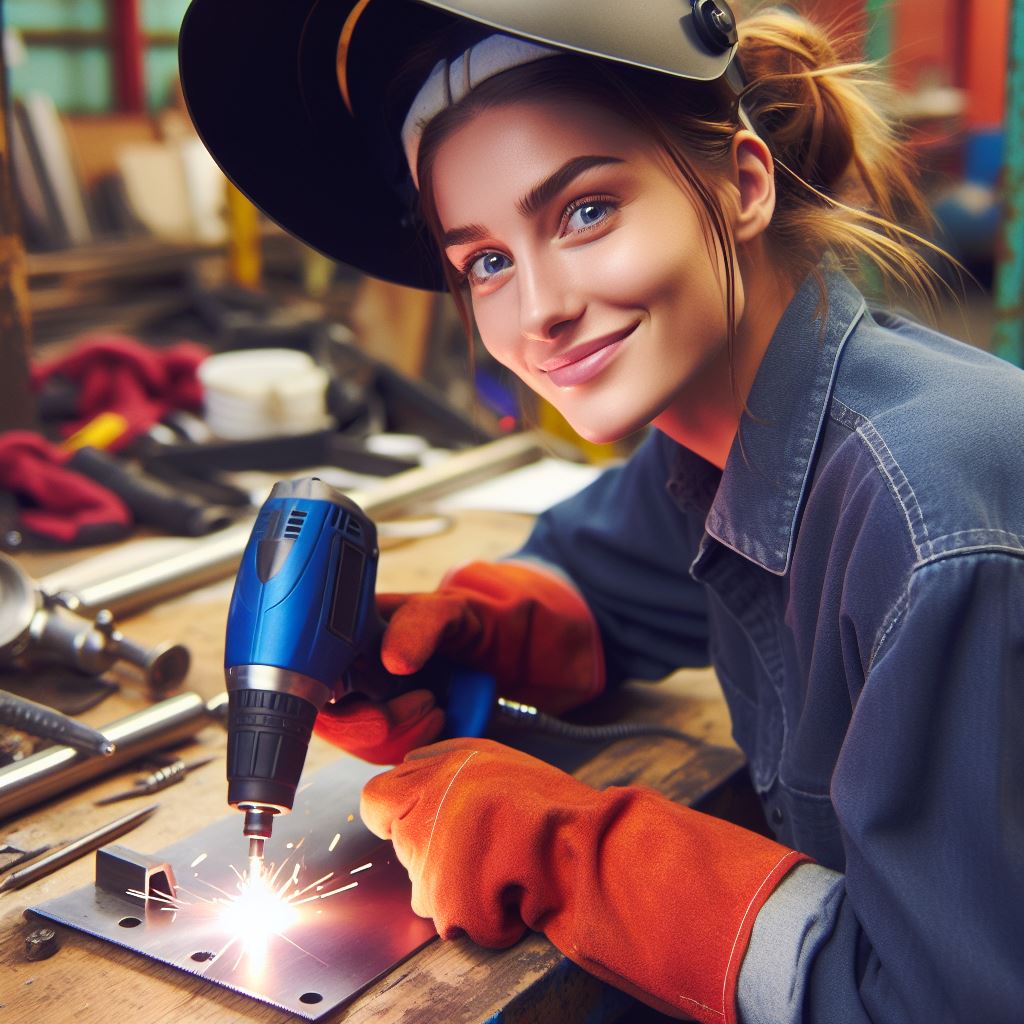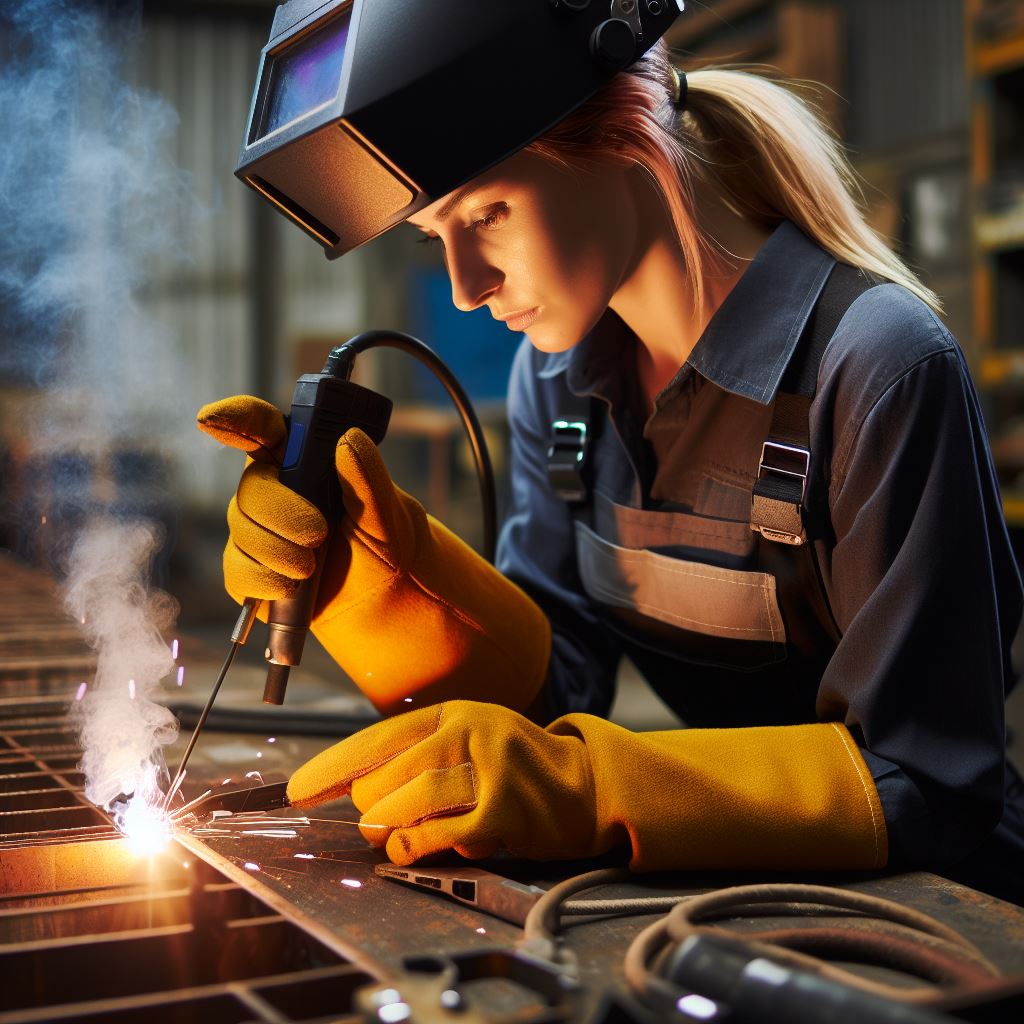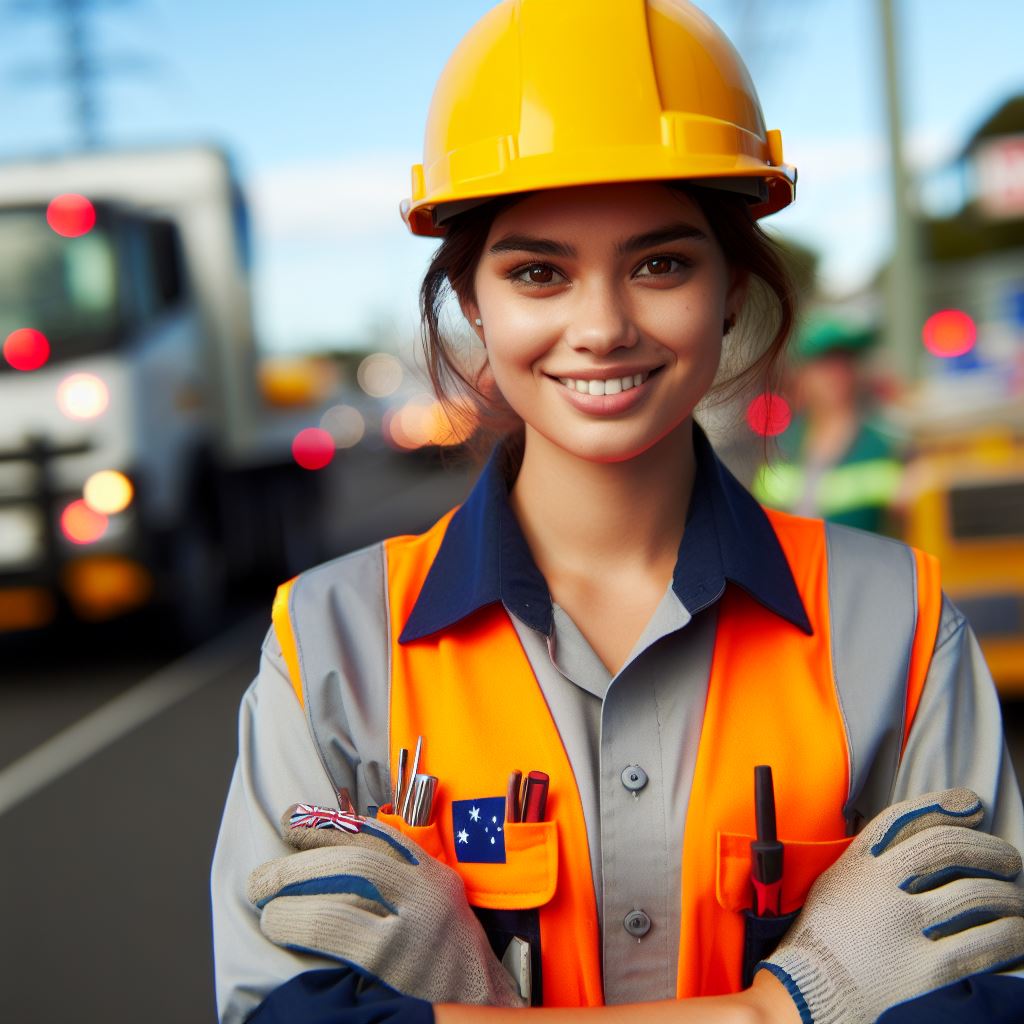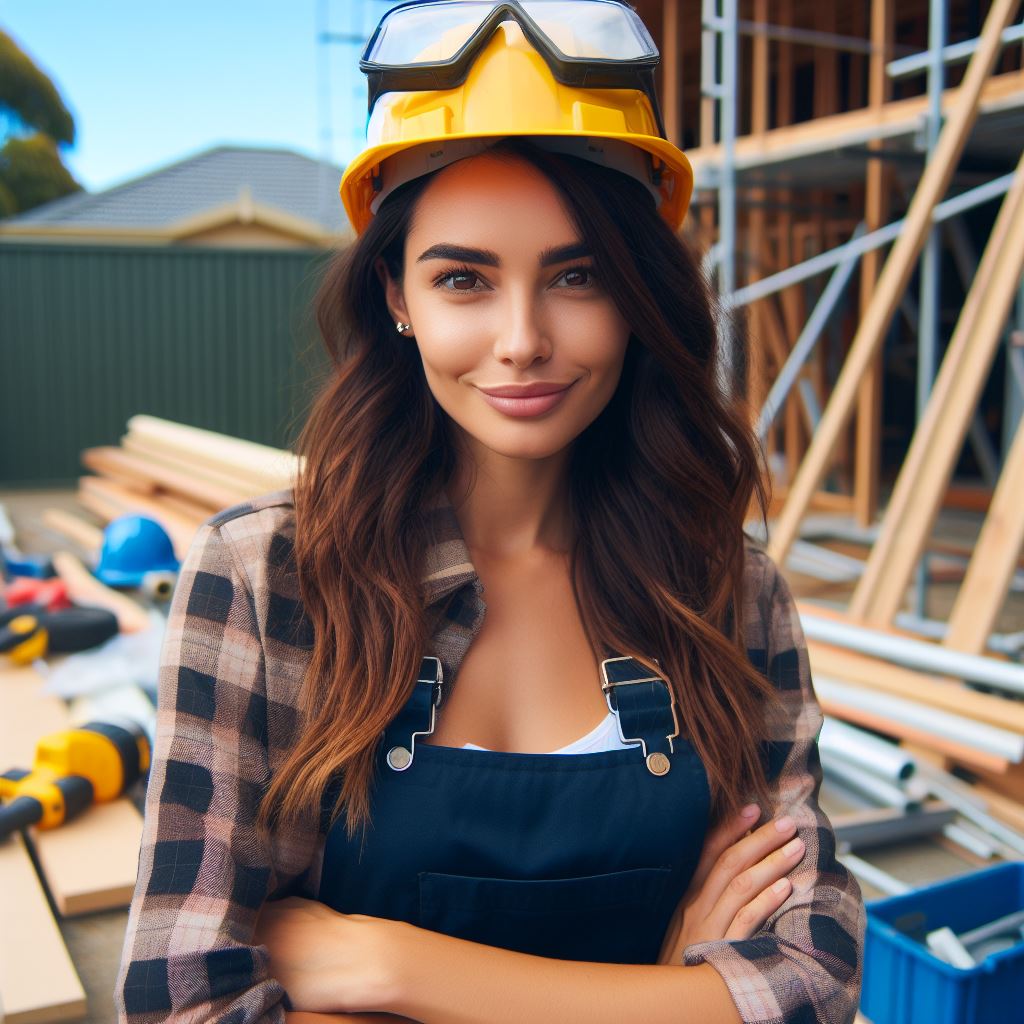Introduction
Delving into the realm of artistic expression, welding transforms into a captivating form in Australia. lets discuss welding art.
As we embark on this exploration, the artistry in welding takes center stage, offering a distinctive avenue for creativity.
This section unravels the multifaceted dimensions of welding art, showcasing its evolution and impact.
From industrial roots to an expressive medium, welding art weaves together the precision of craftsmanship with the boundless realm of imagination.
In Australia, this fusion of technical skill and artistic flair is becoming increasingly recognized, contributing to the vibrant tapestry of the country’s creative scene.
The journey of welding as an art form unfolds with each fusion of metal, creating not just objects but narratives etched in steel.
Join us in deciphering the language of sparks and metal, as welding art takes a transformative journey within the Australian creative landscape.
Welding art in Australia has gained significant popularity and recognition as a creative career path. With its unique blend of technical skill and artistic expression, welding art has captivated audiences and artists alike.
History of Welding Art
Welding art has a rich and diverse history, with its origins dating back thousands of years. Throughout time, it has evolved and grown into a respected form of artistic expression.
Notable artists have made significant contributions to the field, leaving a lasting impact on welding as an art form.
Origins of welding art
The origins of welding art can be traced back to ancient civilizations such as the Egyptians and the Greeks.
These early civilizations discovered that the process of joining two metals together could create not only functional objects but also aesthetically pleasing ones.
The art of welding soon became an integral part of their culture and society.
How it evolved over time
Over time, welding techniques and tools continued to improve and evolve. In the 19th century, the invention of the electric arc welding process revolutionized the field.
This innovative technique allowed for more precise and controlled welding, opening up new possibilities for artists to explore their creativity.
Notable artists and their contributions to the field
Welding art’s growth saw notable artists like Alexander Calder, renowned for his unique welded metal sculptures.
David Smith pioneered large-scale sculptures with abstract shapes, pushing welding art boundaries.
In Australia, a resurgence of interest in welding art features innovators like Jennifer Turpin and Michaelie Crawford.
They explore new possibilities, blending art and function in outdoor installations.
Welding art extends into functional design, with furniture and architects incorporating welded metal elements.
This crossover enriches welding art, adding a new dimension.
A significant advancement is computer-controlled welding machines like CNC plasma cutters, revolutionizing the creative process.
Precision and accuracy enable intricate designs, expanding welding art possibilities.
The history of welding art reflects human creativity, from ancient origins to modern innovations.
Notable artists continually push boundaries, making significant contributions to welding art.
Its versatility and potential captivate and inspire both artists and viewers.
Techniques and Materials
In the world of welding art, artists employ a variety of welding techniques to create their unique creations. From basic welding methods to intricate sculpting, the art form offers endless possibilities for creative expression.
Different Welding Techniques
- Gas Metal Arc Welding (GMAW): Also known as MIG welding, it uses a wire electrode to create a strong bond.
- Shielded Metal Arc Welding (SMAW): Commonly referred to as stick welding, it utilizes a flux-coated electrode.
- Gas Tungsten Arc Welding (GTAW): Known as TIG welding, it uses a non-consumable tungsten electrode.
- Flux-Cored Arc Welding (FCAW): Similar to MIG welding, but with a flux-filled wire electrode.
- Plasma Arc Welding (PAW): A focused plasma arc is used to weld materials together.
Metals and Materials Commonly Used
Welding artists work with a wide range of metals and materials to bring their creative visions to life.
- Steel: A popular choice due to its strength and versatility, used for both structural elements and decorative features.
- Stainless Steel: Known for its resistance to corrosion, often used in outdoor sculptures.
- Aluminum: Lightweight and durable, it allows for the creation of large-scale pieces.
- Copper: Offers a visually striking appearance and is excellent for creating intricate details.
- Brass: Used for its warm and golden hue, often found in ornamental elements.
- Found Objects: Welding artists also incorporate various found objects, such as gears, bolts, and scrap metal, into their pieces.
Examples of Welding Art Pieces
Welding art pieces showcase the incredible range of techniques and materials employed by artists.
- ‘The Phoenix’: This sculpture, created using stainless steel, depicts a majestic phoenix rising from the ashes.
- ‘Metallic Bloom’: A vibrant flower sculpture made from copper, showcasing the artist’s skill in shaping and welding thin sheets of metal.
- ‘Rustic Gears’: Welded together using a combination of steel gears salvaged from old machinery, this artwork showcases the beauty in repurposing materials.
- ‘Abstract Form’: Created from aluminum, this sculpture explores unconventional shapes and lines, challenging the viewer’s perception of space.
- ‘Ocean Waves’: Incorporating brass and stainless steel, this artwork captures the fluidity and movement of ocean waves.
- ‘Industrial Symphony’: Featuring an assortment of found objects and welded parts, this piece reflects the beauty found in industrial elements.
Therefore, welding art is a captivating medium that allows artists to explore various techniques and materials to create visually stunning pieces.
From welding techniques like MIG, TIG, and stick welding to using materials such as steel, stainless steel, and aluminum, artists push boundaries and challenge traditional perceptions of art.
The examples mentioned above are just a glimpse into the incredible world of welding art, where imagination and skill intertwine to create truly unique masterpieces.
Welding Art in Australia
Welding art in Australia has gained significant popularity in recent years. The art form involves using heat and electricity to join materials together, creating unique and intricate sculptures.
Let’s take a closer look at the current state of welding art in Australia and delve into its fascinating world.
Current State of Welding Art in Australia:
Welding art is thriving in Australia, with a growing community of artists dedicated to this unique craft. The art form has evolved beyond traditional methods, incorporating modern techniques and materials.
Australian artists are pushing boundaries and creating stunning pieces that captivate audiences worldwide.
Welding Art Galleries and Exhibitions
Welding art galleries and exhibitions are becoming increasingly popular in Australia. These spaces provide a platform for artists to showcase their incredible creations and connect with art enthusiasts.
Visitors can explore a wide range of welding art pieces, from large-scale sculptures to intricate installations.
Notable Australian Welding Artists and Their Works
John Kelly
John Kelly is a renowned Australian welding artist known for his iconic animal sculptures.
His works often represent the local wildlife, capturing the essence of Australian fauna. Kelly’s sculptures blend steel and creativity, resulting in captivating and realistic portrayals.
Arthur Papas
Arthur Papas is an Australian welding artist who specializes in creating abstract pieces. His artworks explore the interplay of light and shadows, with intricate patterns and unique designs. Papas’s sculptures often evoke emotions and provoke thought, leaving a lasting impact on viewers.
Your Personalized Career Strategy
Unlock your potential with tailored career consulting. Get clear, actionable steps designed for your success. Start now!
Get StartedJulia DeVille
Julia DeVille is a celebrated Australian welding artist known for her unconventional approach. She incorporates organic materials, such as animal bones and taxidermy, into her artwork, creating thought-provoking and visually stunning pieces.
DeVille’s works challenge societal norms and explore the relationship between life and death.
Richard Moffatt
Richard Moffatt is an Australian welding artist with a passion for creating large-scale sculptures. His works often incorporate recycled materials, showcasing his commitment to sustainability.
Moffatt’s sculptures can be found in public spaces, parks, and gardens, adding a touch of artistic brilliance to everyday surroundings.
Liz Jones
Liz Jones is an emerging Australian welding artist known for her beautiful and intricate sculptures. Her works often feature nature-inspired themes, with delicate details and precise craftsmanship.
Jones’s sculptures create a sense of serenity and evoke a deep appreciation for the beauty of the natural world.
In general, welding art in Australia has experienced a surge in popularity, with artists pushing boundaries and creating unique and captivating sculptures.
With galleries and exhibitions showcasing these remarkable works, the art form is gaining recognition and appreciation.
Notable Australian welding artists continue to inspire and create breathtaking pieces that leave a lasting impression on viewers. The future of welding art in Australia looks bright, promising further innovation and creativity in the years to come.
Read: How to Become a Plumber in Australia
Career Opportunities
Potential career opportunities for welding artists in Australia
- Welding artists in Australia have a wide range of career opportunities to explore.
- They can work as independent artists, creating unique and innovative pieces of welding art.
- Many welding artists also work in the film and entertainment industry, creating props and set pieces.
- Some welding artists specialize in creating sculptures and installations for public spaces and art galleries.
- Welding artists can also find employment in the automotive industry, creating custom parts and accessories.
- Australia’s booming construction industry provides opportunities for welding artists to work on architectural projects.
- Welding artists can collaborate with architects and interior designers to create unique pieces for residential and commercial spaces.
- The demand for welding art in Australia is steadily increasing, creating more career opportunities.
- With the growing interest in sustainable design, welding artists can also explore opportunities in eco-friendly construction.
- The renewable energy sector is another area where welding artists can contribute their skills and creativity.
Demand for welding art in various industries
- Architects and interior designers increasingly incorporate welding art into their projects, adding a unique touch.
- Welding art can enhance the aesthetics of a space, making it more visually appealing.
- Many businesses and organizations also commission welding artists to create custom pieces for their premises.
- The hospitality sector, including hotels and restaurants, often uses welding art to create a distinctive atmosphere.
- Public art initiatives by local governments provide opportunities for welding artists to showcase their talent.
- The entertainment industry relies on welding artists to create props and set pieces for movies, TV shows, and theater productions.
- Welding art is also gaining popularity in the fashion industry, with designers incorporating metalwork into their creations.
- Sculptural metalwork is widely used in landscape architecture, adding a dynamic element to outdoor spaces.
- The demand for welding art in exhibitions and art galleries continues to grow, providing opportunities for artists to showcase their work.
Potential for commissioned projects and collaborations
- Welding artists in Australia have the potential to take on commissioned projects from various clients.
- Businesses, homeowners, and public institutions often seek out welding artists for custom-made artwork.
- Collaborations between welding artists and other creatives, such as architects and designers, can lead to exciting projects.
- Joint ventures with other artists can result in unique and innovative pieces that combine different art forms.
- Collaborations with local government bodies can result in large-scale public art installations.
- Welding artists can also collaborate with businesses and organizations for promotional campaigns and events.
- Commissioned projects and collaborations provide welding artists with a steady income stream and opportunities for growth.
- These projects allow artists to expand their creativity and push the boundaries of their art form.
Generally, welding artists in Australia have a world of career opportunities waiting for them.
From working on architectural projects to collaborating with designers and participating in public art initiatives, the demand for welding art is constantly growing.
As the appreciation for this unique form of artistic expression increases, so do the career prospects for welding artists across various industries.
The potential for commissioned projects and collaborations further adds to the excitement and growth prospects in this field.
With their creativity and skill, welding artists have the power to shape and transform the artistic landscape in Australia.
Read: A Day in the Life of an Aussie Plumber

You Might Also Like: Carpenter’s Salary in Australia: A Review
Education and Training
- The importance of acquiring proper education and training in welding art cannot be overstated.
- Specialized courses and programs in welding art are widely available in Australia.
- These courses provide aspiring artists with the necessary technical skills and artistic knowledge.
- Through education and training, welders can learn different welding techniques and metalworking processes.
- Acquiring knowledge in metal fabrication, sculpture, and design enhances artistic capabilities.
- Formal education in welding art also includes theoretical studies in color theory and aesthetics.
- Students gain hands-on experience by working with various welding tools, equipment, and materials.
- Learning proper safety protocols and regulations is essential to prevent accidents and ensure a safe working environment.
- Artistic welding courses teach students how to create and manipulate metal for artistic expression.
- These programs often encourage innovative thinking and experimentation to push creative boundaries.
Gaining knowledge and skills through education and training in welding art offers several benefits
- One of the major advantages is the increased employment opportunities in the art and design industry.
- Well-trained welders have the potential to work as independent artists or collaborate with other creatives.
- Having a recognized certification or diploma in welding art demonstrates professionalism and expertise.
- Education equips artists with the ability to convey their ideas and concepts effectively.
- Understanding the technical aspects of welding enables artists to bring their visions to life.
- Proper training also ensures that the final artwork meets industry quality standards.
- Artists with formal education and training are more likely to attract clients, collectors, and gallery owners.
- The acquired knowledge allows artists to explore new techniques and experiment with unconventional materials.
- Continuing education and learning about the latest trends and technologies in welding art keep artists adaptable.
- Education provides a foundation for artists to develop their own unique artistic style and aesthetics.
In Australia, various institutions offer specialized welding art courses and programs.
- The Technical and Further Education (TAFE) institutes provide accredited courses in welding and fabrication.
- The Australian Welding Institute (AWI) offers certifications and programs tailored to different skill levels.
- Art schools and universities often include welding art in their fine arts or sculpture programs.
- Private studios and workshops conduct short-term courses and workshops for beginners and professionals.
Attending these courses and programs not only enhance skills but also fosters a sense of community.
- Artists can connect with like-minded individuals and learn from experienced practitioners.
- Participating in workshops and exhibitions allows artists to showcase their work and receive constructive feedback.
Developing a strong foundation in welding art through education and training opens up endless possibilities.
By blending technical expertise with artistic vision, artists can create unique and captivating artworks.
Investing in education and training is the first step towards a successful and fulfilling career in welding art.
Read: The Future of Plumbing Tech in Australia
Challenges and Rewards
Challenges Faced by Welding Artists in Australia
Being a welding artist in Australia comes with its fair share of challenges. These artists not only have to overcome technical difficulties but also face obstacles related to recognition, market demand, and societal perceptions.
Limited Recognition and Appreciation
Welding art is often overshadowed by other forms of art like painting or sculpture. The lack of recognition makes it challenging for welding artists to gain visibility and establish themselves in the art industry.
Stand Out with a Resume That Gets Results
Your career is worth more than a generic template. Let us craft a resume and cover letter that showcase your unique strengths and help you secure that dream job.
Get HiredTechnical Skills and Safety
Welding art requires extensive knowledge of welding techniques and safety procedures. Artists must continuously update their skills and stay updated with the latest advancements in welding technology.
Market Demand and Competition
Artists face the challenge of finding a market for their work and standing out among competitors. The demand for welding art can fluctuate, making it crucial for artists to find a niche and constantly adapt to trends.
Financial Constraints
Welding equipment and materials can be expensive, which can pose financial challenges for artists, especially when starting their careers. Artists often have to find ways to fund their projects or secure sponsorships.
Perceptions and Stereotypes
Society often perceives welding as a trade skill rather than an art form. Welding artists face the challenge of breaking stereotypes and educating the public about the artistic value of their work.
The Importance of Perseverance and Dedication
Despite the challenges, perseverance and dedication play a vital role in the success of welding artists in Australia.
Building a Strong Portfolio:
By continuously working on their craft and creating a diverse portfolio, artists can showcase their skills and attract potential clients and galleries.
Networking and Collaboration
Collaborating with other artists, participating in exhibitions, and attending industry events can help artists build connections and gain exposure within the art community.
Continuous Learning and Development
Welding artists must constantly seek opportunities to expand their knowledge and improve their techniques. These efforts not only enhance their skills but also increase their confidence and artistic vision.
Rewards and Personal Fulfillment
Although pursuing a career in welding art can be challenging, it also brings numerous rewards and personal fulfillment.
Creative Freedom
Welding artists have the freedom to express their creativity and bring their visions to life. They can experiment with various materials, techniques, and styles to create unique and captivating artworks.
Sense of Accomplishment
Completing a welding art project gives artists a sense of accomplishment and pride. The process of transforming raw materials into a finished piece of art brings immense satisfaction.
Connection with the Audience
When their work resonates with viewers, welding artists establish a connection and evoke emotions. This connection can be immensely rewarding as it allows artists to touch and inspire people through their art.
Impact on Society
Welding art has the power to transform public spaces and create a lasting impact on communities. Artists have the opportunity to contribute to the cultural and artistic landscape of Australia.
Personal Development
Pursuing a career in welding art requires artists to continuously challenge themselves, learn new techniques, and overcome obstacles. This journey of personal development adds depth and meaning to their lives.
Transform Your LinkedIn for Maximum Impact
Elevate your professional brand with a LinkedIn profile that attracts recruiters, showcases your expertise, and maximizes opportunities. Stand out in your industry with a profile built for success.
Boost ProfileDespite the challenges faced, welding art in Australia offers a unique and fulfilling career path for those who are passionate, dedicated, and willing to embrace the rewards that come with it.
Read: Top Plumbing Trends in Australian Engineering
Delve into the Subject: Top Aussie Building Codes & Compliance Tips
Conclusion
In closing, the realm of welding art in Australia is not merely a craft but a vibrant avenue for creative expression.
As welders fuse metal with artistic ingenuity, their creations transcend the boundaries of traditional welding, becoming captivating pieces of art.
This fusion of technical prowess and artistic vision not only showcases the welder’s skills but also contributes to the cultural landscape.
Welding, once confined to industrial applications, has evolved into a realm where imagination knows no bounds.
The community of welding artists in Australia continues to expand, pushing the boundaries of the medium and challenging conventional norms.
As this unique form of artistic expression gains recognition, it fosters a growing appreciation for the intersection of craftsmanship and creativity.
In essence, welding art thrives in Australia, weaving together the strength of metal and the finesse of imagination into a tapestry of artistic innovation.




